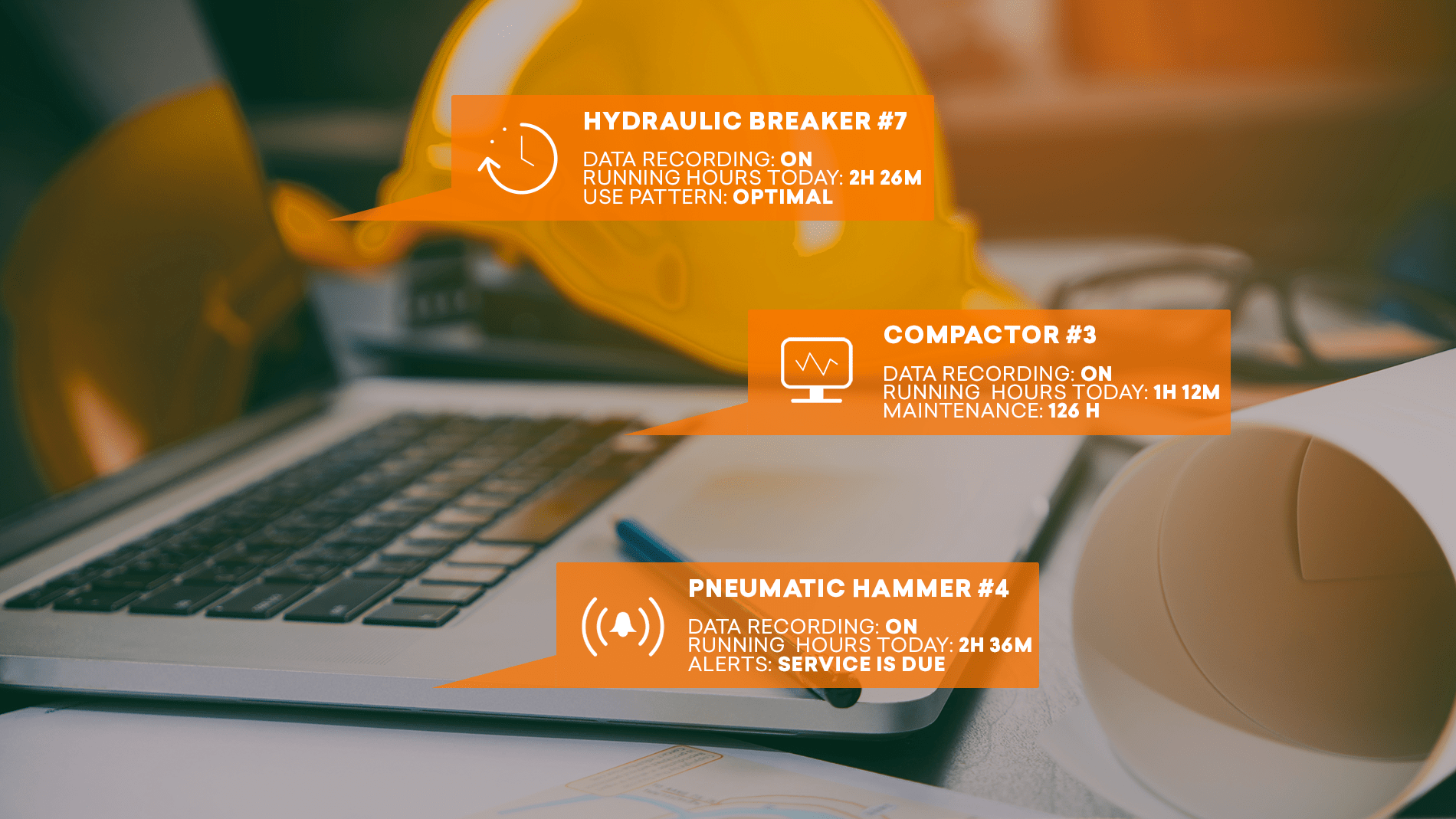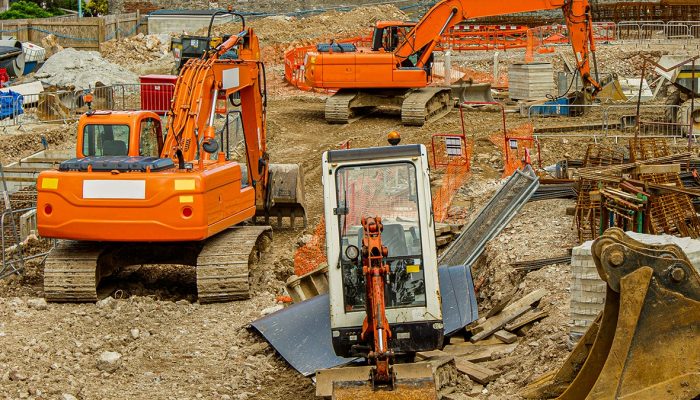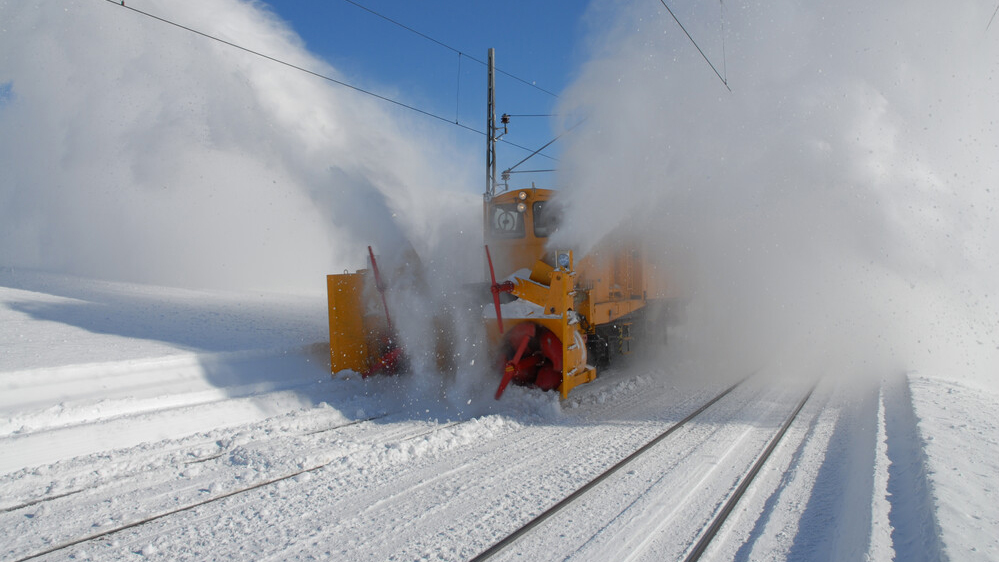The most sought-after benefit of data recording in the construction industry is information on running hours.
This is standard for larger machines and vehicles but has now also become an option for any equipment, tool, or machine.
Learn why construction professionals, both producers of tools and equipment and individual businesses, are increasingly investing in wireless data recorders designed for construction.
We go through the 3 most essential characteristics of data recording that are perfect for hydraulic attachment tools and smaller construction machines like compactors, lifts, or mixers.
1) Running hours will be based on tool-specific characteristics like motion, vibration, and/or tilt.
A data recorder takes into consideration the various use patterns of the equipment it is tracking.
Data on running hours is therefore calculated differently depending on whether the hardware is mounted on, say, a hydraulic attachment or a portable conveyor belt. The typical factors are motion, vibration, tilt, or a combination of these.
In this way, the software will only count certain vibration segments from a hydraulic attachment as running hours while disregarding time spent simply moving around a demolition site.
Similarly, it will track when a mixer is rotating and not as it is set up by users, and so on depending on the equipment or machine.
Users can hereby expect precise running hour data no matter the equipment, tool, or machine.
2) Automatic predictive maintenance and service alarms
When data on running hours becomes available for construction equipment and tools as well as machines, the key benefits quickly become apparent.
For producers, you can now offer customers a built-in software system that enables them to use your tools according to your manual or use guide. This will enable them to enjoy your products longer, as the software can calculate precise predictive maintenance intervals.
For all users, data on running hours enables the set-up of automatic service alarms triggered by the actual usage.
In both these cases, it is now possible to avoid breakdowns and minimize downtime due to attachment and equipment failure.
3) Boost your overall equipment efficiency
A final key benefit of data on running hours is the possibility of analyzing overall equipment efficiency.
Overall equipment efficiency is an important metric to ensure that equipment is used safely and is not either overused or not used at all.
As an example, consider hydraulic attachment tools. It is essential that the attachment is used in certain patterns and not for too long periods of time.
The data from the mounted data recorders will highlight use patterns based on vibration length and strength to raise a red flag if attachments are being misused.
Similarly, if you compare data on running hours across several assets, you will be able to identify equipment that is being used too much and some that might be seen as idle in comparison.
Managers could use this information to incorporate the idle units on projects, or maybe sell off equipment that is no longer relevant for use on the project.
Tell me more
A small wireless data recorder with an intelligent software solution can open up a range of new digital options for construction businesses.
At Trusted A/S, we are specialists in delivering data recording solutions to construction businesses and producers of hydraulic equipment.
Want to learn more? Research both software and hardware of data recording technology on the Trusted website.
Or click below to learn more about digitalization in construction. Get individual input on your own data needs by contacting a tracking specialist today.
Alternatively, by signing up for our newsletter here, you can keep updated with data recording technology.
Running hours are measured in different ways depending on the equipment or tool you wish to monitor.
With this data, you can measure predictive maintenance or service intervals of your equipment.
It is also possible to analyse overall equipment effectiveness and optimize use of each attachment tool or machine.





